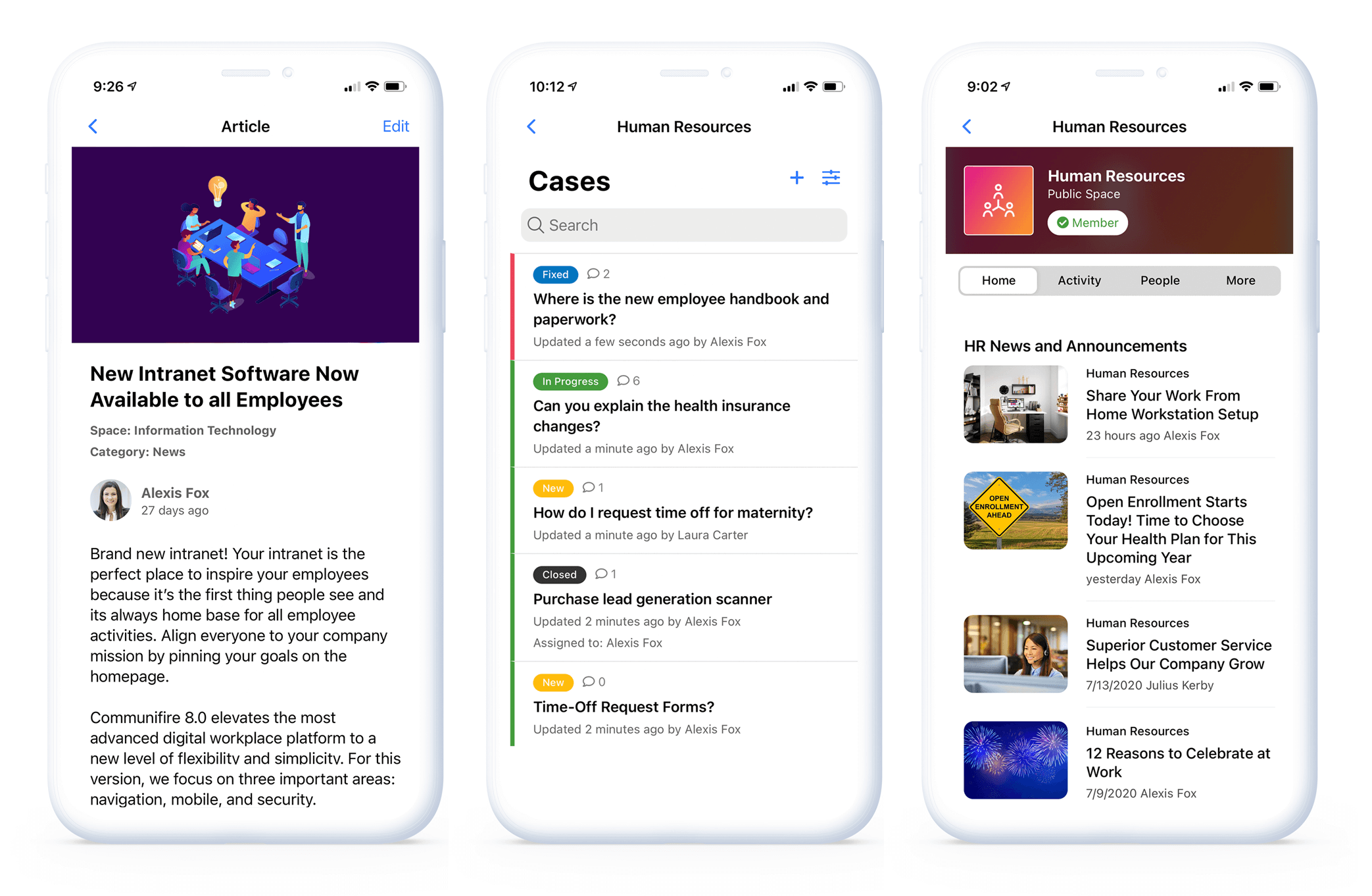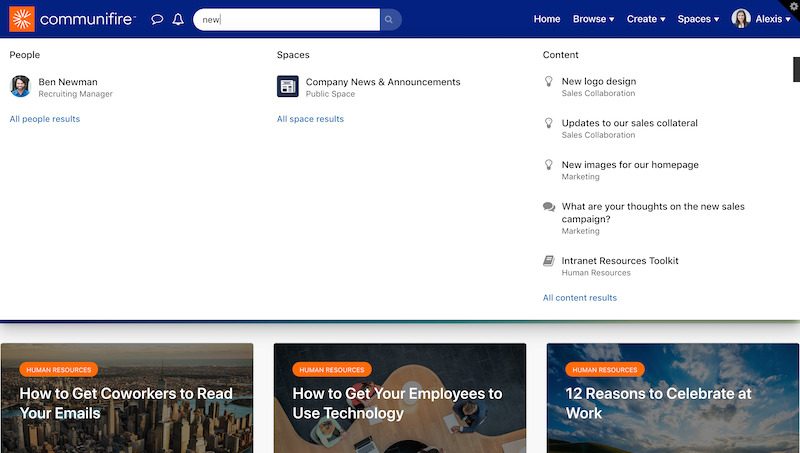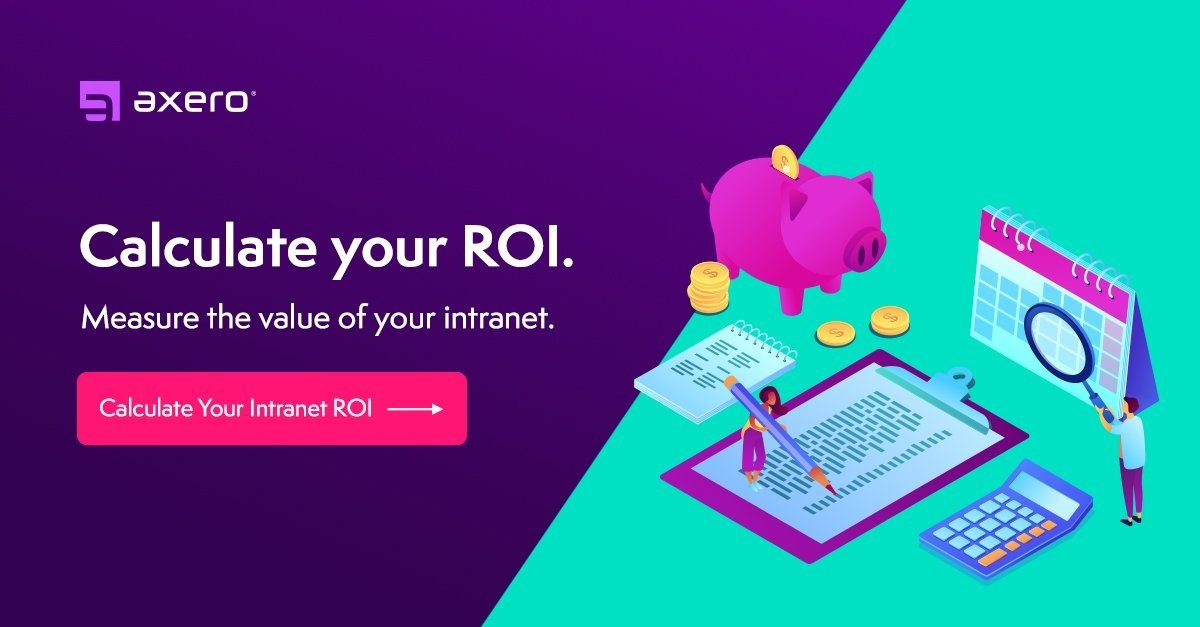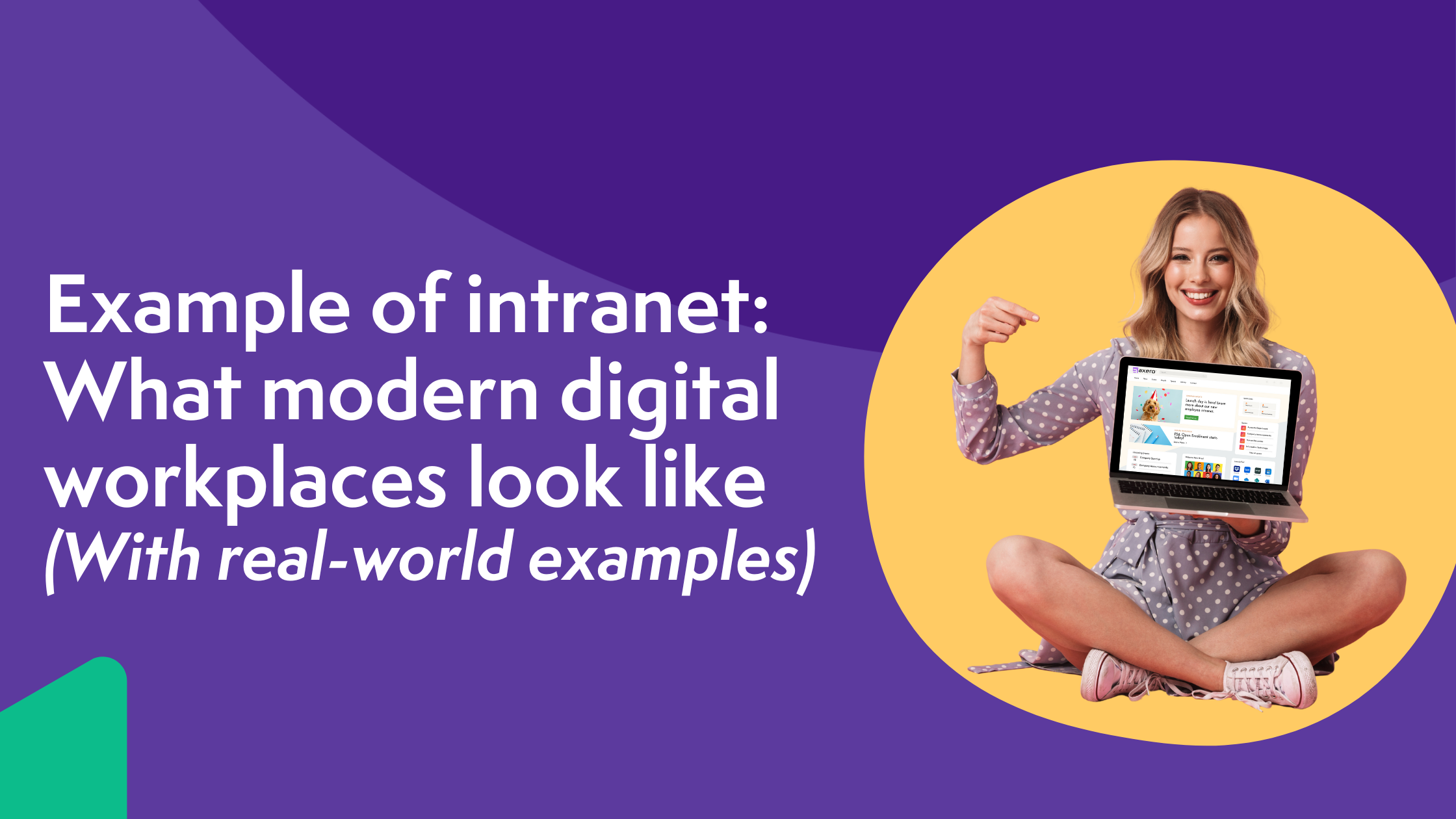Does your team spend more time searching for documents than working on them?
Do you hear whispers of ‘broken links’ and ‘outdated content’?
Do you find that the user interface is no longer intuitive or user-friendly for newer members of your team?
These might be telltale signs that your company intranet requires an upgrade. Just like dated software can hamper productivity, an obsolete intranet system can stifle collaboration and innovation.
Let’s look at some clear indicators that suggest when and why it’s essential to consider an intranet revamp.
Traditional Intranet vs Modern Intranet
Upgrade often means going from A to B: from traditional or legacy intranets to modern intranet software solutions, in this very case. Perhaps it’s a good idea to at least understand what they are and their key differences if you’re considering an intranet upgrade.
An intranet, at its core, is a private network exclusive to an organization that facilitates internal communication and collaboration.
Traditional intranets, prevalent in the late 20th and early 21st centuries, were primarily designed as static repositories for documents and organizational information. They often had a one-size-fits-all design, limited personalization, and mostly top-down communication where the organization’s leadership shared updates with employees. Interaction was minimal (and so was employee engagement), and user experience wasn’t a primary focus.
Modern intranets, on the other hand, have evolved to be more dynamic and user-centric. They solve workplace gaps by harnessing the power of contemporary web technologies to offer personalized content, social interaction capabilities, and a more engaging user experience.
Integrating social features reminiscent of popular social media platforms, they promote two-way communication, allowing employees to share ideas, comment, and collaborate on projects in real time.
Moreover, the modern intranet is mobile-responsive and often integrates with an array of third-party applications. These new functionalities enable access from various devices and help streamline workflows.
While both traditional and modern intranets serve the purpose of internal communication, the modern intranet emphasizes engagement, collaboration, and adaptability, reflecting the changing nature of the digital workplace.
Many of us might have been there – using that outdated intranet that feels like it’s running on hamster power. If you’re constantly frustrated, can’t find what you need, or just feel like you’re using a relic, it’s probably shouting, “Upgrade me!”
Keeping things fresh ensures your intranet remains a productive tool, not a chore. Staying modern isn’t just for looks; it’s about efficiency and, to be frank, a smidge of workplace happiness.
And here are 10 unmistakable signs your existing intranet might be due for a spruce-up.
1. Outdated user interface
If your intranet looks like it belongs in the previous decade, it can be a deterrent for users. A modern interface ensures optimal user experience and increased engagement.
Outdated user interfaces often lack intuitive designs and intranet templates, which we have all come to expect these days, thanks to advancements in web design and technology. When your intranet screams “vintage” (and not in a good way), users (your employees) might find it cumbersome to navigate, leading to reduced productivity and reluctance to use the platform.
Today’s users crave seamless, intuitive experiences. A modern interface, therefore, doesn’t just look aesthetically pleasing; it aligns with current best practices, facilitating swift access to resources, fostering collaboration, and encouraging consistent use across teams.
2. Slow performance
If your intranet takes ages to load pages or frequently crashes, it can be a sign of outdated infrastructure or software. Slow performance can lead to reduced productivity and user frustration.
Slow performance can truly be the Achilles’ heel of an intranet. In today’s digital age, speed equates to efficiency, which is why many intranets are cloud-based solutions. Prolonged loading times or frequent system downtimes don’t just test users’ patience; they can break the workflow, causing delays in project timelines. To make matters worse, employees start associating the intranet with inconvenience.
Modern businesses thrive on real-time collaboration and instant access to data. An underperforming intranet, hence, isn’t just a minor inconvenience; it’s a bottleneck to overall organizational efficiency, undermining the very purpose of having an intranet in the first place.
3. Limited mobile accessibility
Employees nowadays expect to access the intranet on the go. If your intranet isn’t mobile-responsive or lacks a functional mobile app, you’re behind the times.
The modern workforce is increasingly mobile and dynamic. With remote work, flexible hours, and the rise of digital nomadism, employees aren’t just tethered to desktops in office cubicles. They’re working from cafes, homes, traveling, or frontline workers. As such, an intranet that doesn’t cater to mobile devices can be a significant drawback.
Without mobile accessibility, employees might miss out on critical updates, collaborations, or simply the convenience of accessing information anytime, anywhere. It’s essential for company intranets to evolve with these changing work patterns, ensuring inclusivity and continuous connectivity.
With Axero native iOS and Android apps, you can stay connected with your team and your business wherever you are. Our mobile intranet software features a customizable homepage, super smart navigation, an employee directory, and internal communication tools to keep everyone updated with all of the current happenings at your company.
4. Inefficient search capabilities
An effective intranet should allow users to quickly find what they’re looking for. If employees spend too much time searching for documents or information, an upgrade is definitely in order.
The crux of any intranet is its ability to swiftly deliver relevant content to users. If it falters here, the ripple effects are manifold. Employees can get bogged down sifting through heaps of data, leading to wasted hours that could’ve been used productively elsewhere. Plus, inefficient search capabilities can induce frustration as staff constantly grapple with the challenge of locating critical resources.
At the end of the day, the core value of an intranet lies in seamless information retrieval. A system that stumbles at this fundamental step compromises both user satisfaction and operational efficiency.
Did you know our Intranet Federated Search allows you to find what you need across your entire intranet and all of your connected file repositories? You can search for keywords, names, and dates, to name a few, and Axero’s robust search feature will give you all relevant content.
5. Lack of collaboration tools
Modern intranets offer a variety of online collaboration tools like chat, forums, and project management suites (which, of course, you can access and make use of all these modern features and many more using Axero’s team collaboration software). If yours doesn’t, you might be missing out on enhanced team cooperation.
The ability to collaborate in real-time has become indispensable in any digital workplace. Modern intranets, serving as digital hubs, facilitate this by integrating tools, such as corporate wikis and knowledge bases, that foster communication and teamwork.
Without such features, teams could operate in silos, impeding the free flow of ideas and feedback. An intranet devoid of collaboration tools isn’t just outdated; it potentially hampers the synergistic energy teams can harness.
6. Inadequate security measures
As cyber threats evolve, it’s crucial that your intranet has robust security measures in place to protect sensitive company information.
An intranet holds a treasure trove of company-specific data, making it a lucrative target for cybercriminals. As these threat actors deploy increasingly sophisticated tactics, outdated or insufficient security protocols can leave an organization alarmingly vulnerable. Beyond potential financial repercussions, security breaches can tarnish a company’s reputation and erode trust.
Keeping your systems secure often involves application modernization, which is vital for maintaining strong defenses. As such, ensuring the intranet’s security apparatus is up-to-date isn’t just about safeguarding data; it’s about preserving the integrity and credibility of the entire organization.
Advanced security is built into Axero from the ground up, making our modern intranet solutions secure by design. And we’ve done this in a way that’s in balance with a great user experience, giving your people the freedom to work the way they want.
7. Limited integration capabilities
If your intranet can’t integrate smoothly with other software tools and platforms your company uses, it might be causing more hindrance than help.
Modern organizations employ a plethora of software tools, each serving distinct functions – from CRM systems to project management platforms. An intranet that can’t fluidly connect with these tools can become an isolated island, disrupting workflows and necessitating redundant manual processes. This disjointedness not only slows down tasks but also risks data inconsistencies.
An intranet’s ability to integrate is no longer a luxury but a vital aspect ensuring that it acts as a harmonizing force amidst diverse software ecosystems.
We’re not joking when we say we understand that integration is the linchpin of seamless operation. Our intranet software integrates with 35+ common workplace platforms and tools you know and use, including Slack, Microsoft Office 365 and Teams, Google Workspace, Zoom, Vimeo, Twilio, Splunk, Dropbox, ELGG, Jitsi, SAASPASS, Salesforce, Unsplash, WordPress, and many more!
8. Poor feedback from employees
If a significant number of employees express dissatisfaction with the current intranet or share ideas for improvement, it’s a clear indication to consider an upgrade.
Employees are the primary users of an intranet, so their feedback is an invaluable barometer of its effectiveness. If they voice concerns or offer suggestions, it indicates a misalignment between their needs and the platform’s capabilities. Moreover, dissatisfaction can lead to reduced usage, causing missed opportunities for collaboration and knowledge sharing.
Addressing employee feedback helps ensure your company intranet remains a relevant, integral tool that supports day-to-day functions and nurtures a connected, informed workplace.
9. Difficult to update and maintain
Maintainability is a cornerstone of any digital platform’s longevity, and an effective intranet should be easy to update and maintain. If this isn’t the case, it might lead to prolonged downtimes or neglected updates.
When an intranet becomes more of a “chore” to manage, its health can swiftly decline. Outdated content can stagnate, patches or crucial updates may be delayed, and this could result in security vulnerabilities. Plus, prolonged downtimes due to maintenance can disrupt business operations, creating ripple effects across departments.
Essentially, an intranet’s agility in terms of updates and maintenance ensures it evolves in tandem with organizational needs, providing a stable and secure platform for users.
10. Not aligned with company goals
Your intranet should be an extension of your company’s objectives and culture. If it doesn’t reflect or support your company’s current vision and goals, it’s time to rethink its design and functionality.
An intranet is more or less a manifestation of a company’s ethos, values, and aspirations. When there’s a disconnect between the intranet’s design or functionality and the company’s overarching objectives, it can send mixed messages to employees. This misalignment can hamper effective communication, thwart strategic initiatives, or even dilute the company’s brand identity internally.
Ultimately, your company intranet should mirror your company’s vision and improve your company culture along the way, acting as a cohesive platform that galvanizes employees towards shared goals and fosters a unified organizational culture.
So, is it time for a new intranet?























 info@axerosolutions.com
info@axerosolutions.com 1-855-AXERO-55
1-855-AXERO-55


